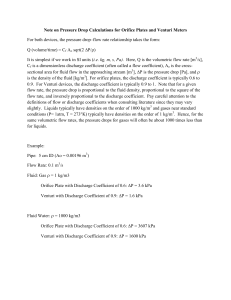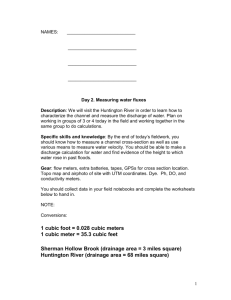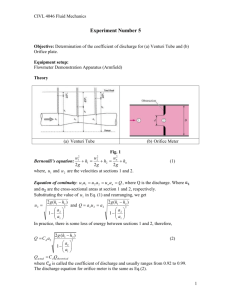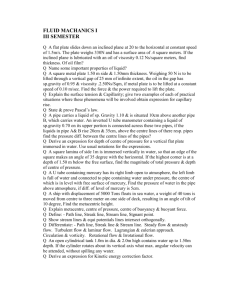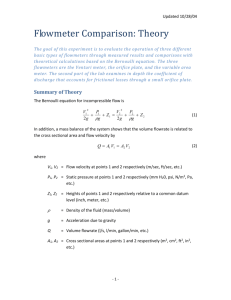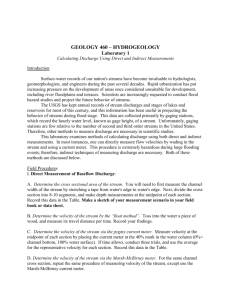Question 2
advertisement
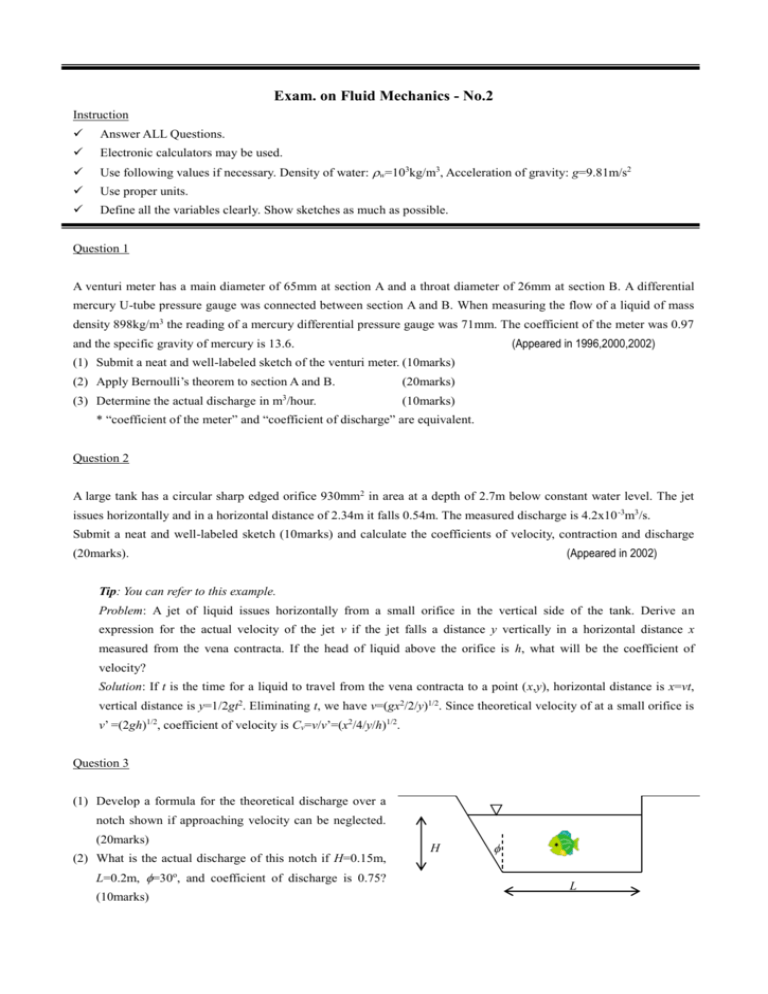
Exam. on Fluid Mechanics - No.2 Instruction Answer ALL Questions. Electronic calculators may be used. Use following values if necessary. Density of water: w=103kg/m3, Acceleration of gravity: g=9.81m/s2 Use proper units. Define all the variables clearly. Show sketches as much as possible. Question 1 A venturi meter has a main diameter of 65mm at section A and a throat diameter of 26mm at section B. A differential mercury U-tube pressure gauge was connected between section A and B. When measuring the flow of a liquid of mass density 898kg/m3 the reading of a mercury differential pressure gauge was 71mm. The coefficient of the meter was 0.97 (Appeared in 1996,2000,2002) and the specific gravity of mercury is 13.6. (1) Submit a neat and well-labeled sketch of the venturi meter. (10marks) (2) Apply Bernoulli’s theorem to section A and B. 3 (3) Determine the actual discharge in m /hour. (20marks) (10marks) * “coefficient of the meter” and “coefficient of discharge” are equivalent. Question 2 A large tank has a circular sharp edged orifice 930mm2 in area at a depth of 2.7m below constant water level. The jet issues horizontally and in a horizontal distance of 2.34m it falls 0.54m. The measured discharge is 4.2x10 -3m3/s. Submit a neat and well-labeled sketch (10marks) and calculate the coefficients of velocity, contraction and discharge (Appeared in 2002) (20marks). Tip: You can refer to this example. Problem: A jet of liquid issues horizontally from a small orifice in the vertical side of the tank. Derive an expression for the actual velocity of the jet v if the jet falls a distance y vertically in a horizontal distance x measured from the vena contracta. If the head of liquid above the orifice is h, what will be the coefficient of velocity? Solution: If t is the time for a liquid to travel from the vena contracta to a point (x,y), horizontal distance is x=vt, vertical distance is y=1/2gt2. Eliminating t, we have v=(gx2/2/y)1/2. Since theoretical velocity of at a small orifice is v’ =(2gh)1/2, coefficient of velocity is Cv=v/v’=(x2/4/y/h)1/2. Question 3 (1) Develop a formula for the theoretical discharge over a notch shown if approaching velocity can be neglected. (20marks) (2) What is the actual discharge of this notch if H=0.15m, L=0.2m, =30o, and coefficient of discharge is 0.75? (10marks) H L

